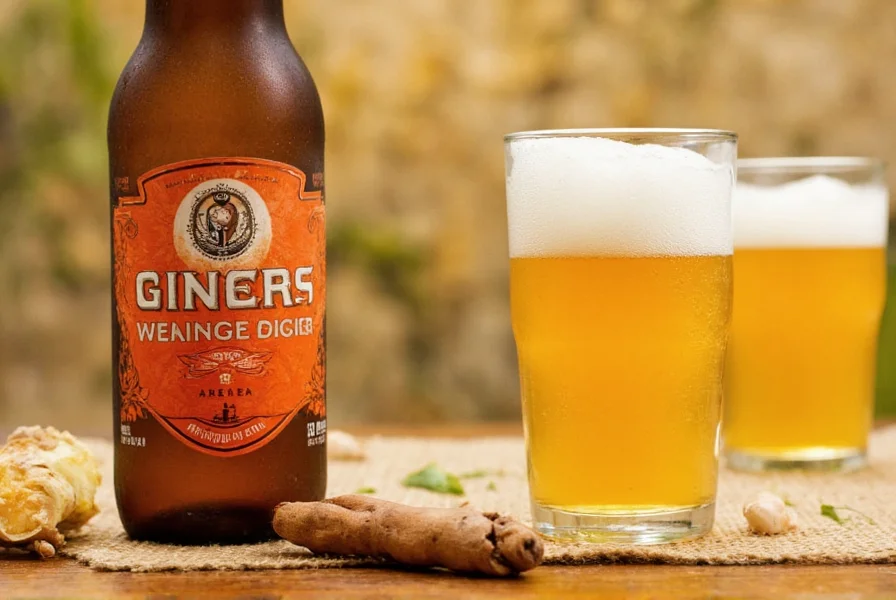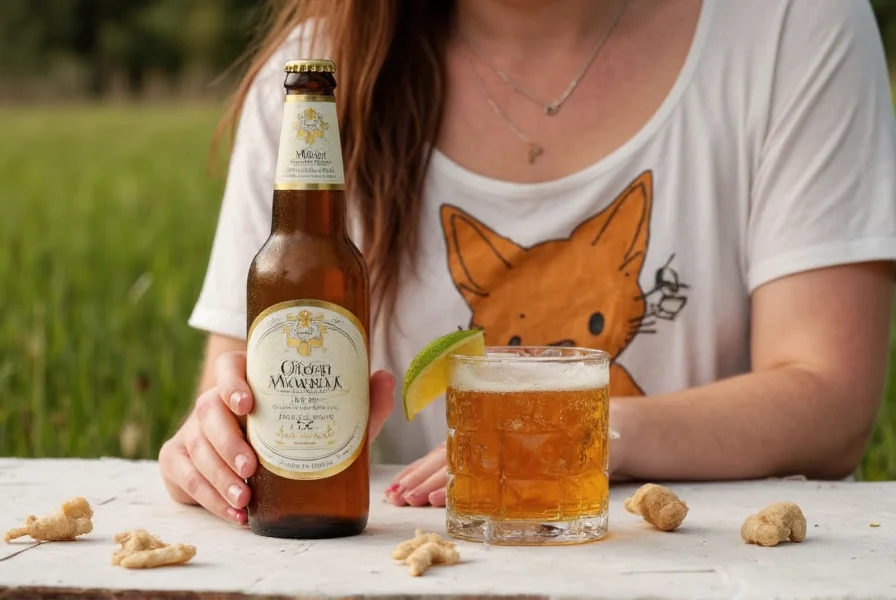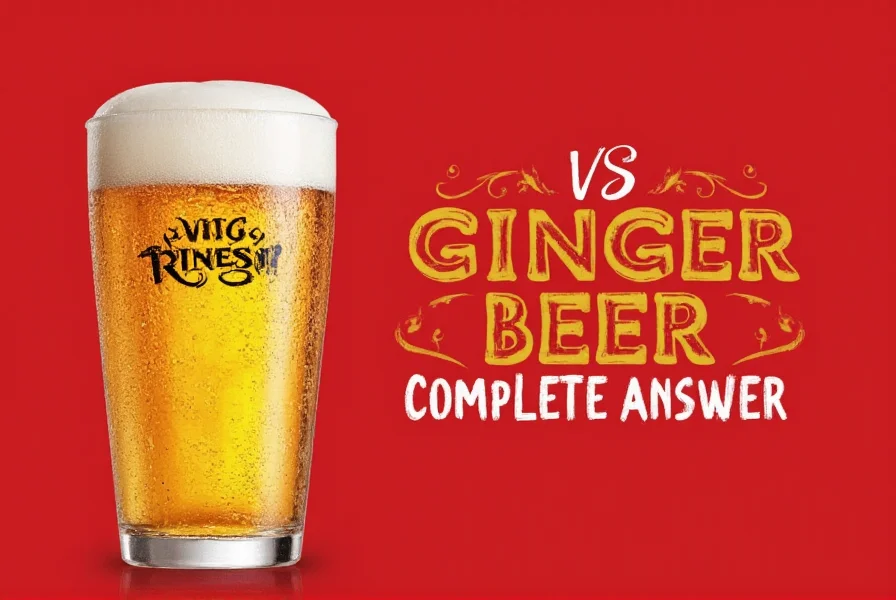Many consumers wonder about the alcoholic content of ginger beer, often confusing it with ginger ale or assuming all ginger-flavored beverages contain alcohol. This confusion stems from ginger beer's historical roots as a fermented beverage, contrasted with modern production methods that typically eliminate significant alcohol content.
The Historical Context of Ginger Beer
Ginger beer originated in 18th century England as a fermented beverage made from ginger root, sugar, water, and a symbiotic culture of yeast and bacteria known as the "ginger beer plant." This traditional preparation method naturally produced alcohol through fermentation, typically resulting in 2%-11% alcohol by volume (ABV). During the Victorian era, ginger beer was a popular working-class drink, often sold in pubs alongside other alcoholic beverages.
The traditional brewing process involved combining fresh ginger, sugar, lemon, and the ginger beer plant in water, then allowing the mixture to ferment for several days. This natural fermentation created carbonation and alcohol, similar to how kombucha or traditional root beer was made. In fact, "small beer" versions with lower alcohol content (around 0.5%-2% ABV) were commonly consumed as a safer alternative to potentially contaminated water.
Modern Ginger Beer Production
Today's commercial ginger beer market has largely shifted away from fermentation. Most mass-produced ginger beer brands use carbonated water with ginger flavoring, citric acid, and sweeteners—bypassing the fermentation process entirely. This modern approach creates a consistently spicy, non-alcoholic beverage that can be marketed to all age groups and sold in regular grocery stores without alcohol restrictions.
The key difference lies in the production method:
| Production Method | Alcohol Content | Carbonation Source | Common Availability |
|---|---|---|---|
| Traditional Fermentation | 0.5%-11% ABV | Natural from fermentation | Craft breweries, homebrew, specialty stores |
| Modern Carbonation | 0%-0.5% ABV (non-alcoholic) | Added carbon dioxide | Supermarkets, convenience stores worldwide |
Understanding Alcohol Content Labels
When determining whether a ginger beer contains alcohol, check for these indicators:
- "Hard" or "Alcoholic" labeling - Craft versions often explicitly state they're alcoholic
- "Fermented" in ingredients - Suggests potential alcohol content
- "Non-alcoholic" or "0.0% ABV" claims - Confirms no significant alcohol
- Sold in alcohol sections - In many regions, beverages over 0.5% ABV must be sold in liquor departments
In the United States, beverages containing less than 0.5% alcohol by volume are legally classified as non-alcoholic. Most commercial ginger beers fall below this threshold. However, craft and homemade versions often exceed this limit, making them legally alcoholic beverages that require age verification for purchase.
Regional Variations in Ginger Beer
Ginger beer regulations and production methods vary significantly by country:
- United Kingdom - Traditional fermented ginger beer remains more common, with several craft producers making alcoholic versions
- United States - Most supermarket ginger beer is non-alcoholic, while "hard" versions are sold as alcoholic beverages
- Australia and New Zealand - Traditional ginger beer often contains up to 0.5% ABV, straddling the legal boundary
- Caribbean nations - Many regions maintain traditional fermentation methods, producing ginger beer with noticeable alcohol content
Homemade Ginger Beer Alcohol Content
Those making ginger beer at home should understand that fermentation duration directly impacts alcohol content. A typical homemade recipe might produce:
- 3-5 days fermentation: 0.5%-2% ABV ("small beer" strength)
- 7-10 days fermentation: 3%-6% ABV (similar to beer)
- Extended fermentation: Up to 11% ABV (approaching wine strength)
Home brewers can control alcohol content by adjusting sugar quantity, fermentation temperature, and duration. Those seeking non-alcoholic results often stop fermentation early or pasteurize the beverage to kill the yeast.
Distinguishing Ginger Beer from Ginger Ale
Many consumers confuse ginger beer with ginger ale, but they differ significantly:
- Ginger beer traditionally has a stronger, spicier ginger flavor and may be alcoholic (depending on production)
- Ginger ale is almost always non-alcoholic, milder in flavor, and carbonated artificially
The difference between ginger beer and ginger ale has become less distinct as commercial producers have standardized both products. However, craft beverage makers often maintain the traditional stronger flavor profile for ginger beer.
Reading Labels for Alcohol Content
When shopping for ginger beer, look for these specific terms that indicate alcohol content:
- "Hard ginger beer" - Explicitly alcoholic version (typically 4%-7% ABV)
- "Fermented ginger beverage" - May contain alcohol
- "Non-alcoholic" or "alcohol-free" - Contains less than 0.5% ABV
- "Craft brewed" without "non-alcoholic" disclaimer - Potentially contains alcohol
In regions with strict alcohol labeling laws, any beverage containing more than 0.5% ABV must display the actual alcohol percentage on the label. If no alcohol content is listed, the product likely falls below the threshold for mandatory disclosure.

Popular Alcoholic Ginger Beer Options
For those specifically seeking alcoholic ginger beer, several craft options exist:
- Cock n' Bull Premium Ginger Beer (0.5% ABV) - Technically non-alcoholic but at the threshold
- Reed's Extra Ginger Beer (0.5% ABV) - Another borderline option
- Brooklyn Crafted Hard Ginger Beer (4.5% ABV)
- Askew Spirits Ginger Beer Liqueur (18% ABV)
- Various local craft brewery offerings labeled as "hard ginger beer"
These products are typically found in liquor stores or the alcohol section of supermarkets, not with regular soft drinks. The growing craft beverage movement has revived interest in traditionally fermented ginger beer, making alcoholic versions more widely available than they've been in decades.

Conclusion
The question of whether ginger beer is alcoholic doesn't have a simple yes-or-no answer. Traditional fermented ginger beer does contain alcohol, sometimes significantly, while most commercial products today are non-alcoholic. Understanding production methods, reading labels carefully, and knowing regional variations will help consumers make informed choices based on their preferences and needs.
When shopping for ginger beer, always check the label for alcohol content information. If none is provided and the product is sold alongside regular soft drinks, it's almost certainly non-alcoholic. For those seeking the traditional fermented experience, look for craft products explicitly labeled as "hard" or "alcoholic" ginger beer, typically found in liquor departments.
Is all ginger beer alcoholic?
No, not all ginger beer is alcoholic. Most commercial ginger beer sold today is non-alcoholic (less than 0.5% ABV), while traditionally fermented ginger beer contains alcohol (typically 0.5%-11% ABV).
How can I tell if ginger beer contains alcohol?
Check the label for terms like 'hard,' 'alcoholic,' or the specific ABV percentage. Products with more than 0.5% alcohol by volume must display this information in most regions. If sold in the regular soft drink aisle rather than the alcohol section, it's likely non-alcoholic.
What's the difference between ginger beer and ginger ale?
Traditional ginger beer has a stronger, spicier ginger flavor and may be alcoholic (depending on production method), while ginger ale is almost always non-alcoholic and milder in flavor. Most commercial products have become more similar over time, but craft versions maintain the distinction.
Can you get drunk from drinking ginger beer?
Regular commercial ginger beer (less than 0.5% ABV) won't cause intoxication. However, traditionally fermented or craft 'hard' ginger beer (typically 4%-7% ABV) can produce intoxicating effects similar to beer when consumed in sufficient quantities.
Why is some ginger beer alcoholic while other types aren't?
The alcohol content depends on the production method. Fermented ginger beer uses yeast to convert sugars to alcohol, creating an alcoholic beverage. Most modern commercial ginger beer skips fermentation and instead adds carbonation directly, resulting in a non-alcoholic product.











 浙公网安备
33010002000092号
浙公网安备
33010002000092号 浙B2-20120091-4
浙B2-20120091-4